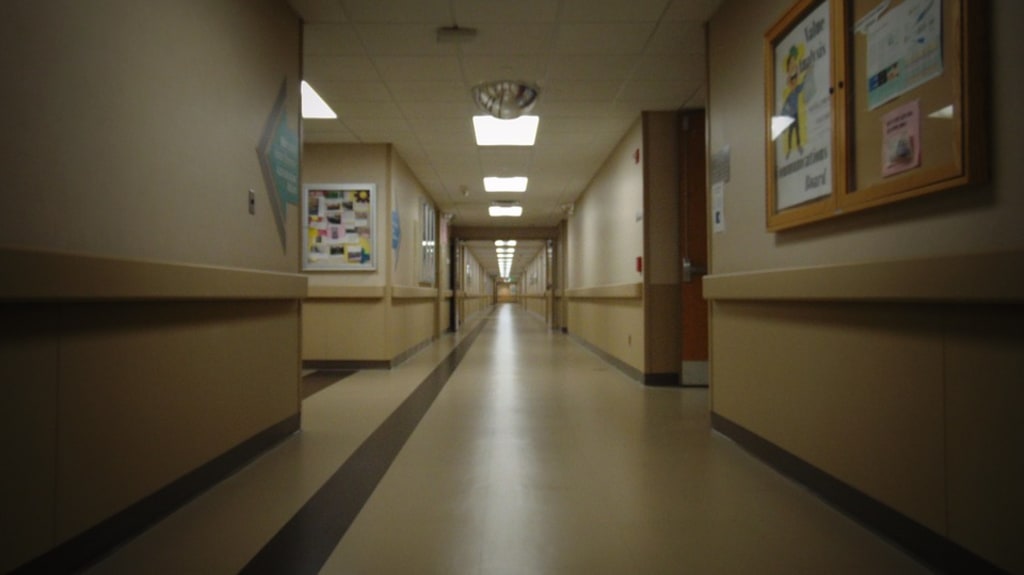The Truth About Late-Term Abortions
It's not nice, but it is sometimes necessary.

I decided to write about abortion, not because I have any information that’s not already out there, or because I have a particularly unique angle on it. But there is a problem with how politicians and the media characterise late-term abortions and use it to demonise women and doctors, when it hardly makes a difference to the overall numbers, and is the worst possible demographic to go after. The facts are out there, but we so rarely hear about them – almost certainly because we prefer emotion over evidence – and the facts tell a heartbreaking truth in this case.
I will also be speaking from the perspective of the UK health system and law, because that is the jurisdiction I’m most familiar with. I know that similar issues will face women in many locations, but that the availability & quality of healthcare, and the rules and technologies will be different in different countries – so these thoughts won’t align perfectly with the reality of systems in other places. I’ve cited statistics, which are mainly from this document, produced by the UK Office for National Statistics:
Abortion Statistics, England and Wales: 2016
You should take a look yourself, the summary pages at the start are a fairly short read, and it’s all factual and easy to follow. If you love data, the appendices are full of tables and graphs for your perusal.
Whenever right-wing politicians discuss restricting abortion access, you can bet that they’re going to go after the extreme end of the scale, the so-called late-term abortions. It’s also a favourite of “pro-life” campaigners, because they’re able to make it sound shocking: as if doctors everywhere are terminating pregnancies close to their due date, completely willy-nilly and without scrutiny. A couple of minute’s thought and googling could tell anyone that this obviously isn’t true, so why does this topic keep on coming up?
I googled “uk 24 week abortion limit”, and about half of the results on the first three pages were factual and pro-health, and the remainder reported on stories of a more “pro-life” stance. Here is a selection of those maligning the 24-week limit, and twisting the truth:
Abortion limit called to be reduced from 24 weeks says ONS | Daily Mail Online- which is factually untrue. The ONS said nothing of the sort, all they do is report statistics. What they actually reported on was an increase in the proportion of extremely premature babies that survived in 2013. The Daily Mail conflated this with the 24-week limit on most abortions under the law, which is not the same thing at all. They also got some anti-abortionists to espouse their opinion, contrasted with some facts from healthcare professionals. Not helpful .
Poll: most Britons want abortion limit reduced to 20 weeks | CatholicHerald.co.uk - surprise, surprise, a poll conducted by a pro-life group gave exactly the result you would expect it to.
Parents release photo of daughter born at 24-week-old abortion limit saying 'She's not a foetus, she's a fully-formed human being' | Mirror.co.uk - this is very sad, but it doesn't actually have anything to do with abortion. I feel the family are being exploited for the sake of a lurid headline.
This article from 2005 discusses the reasons that doctors voted to retain the 24-week limit:
Doctors vote to keep 24-week abortion limit | Society | The Guardian
The main factor behind ignorance of the reality of abortion (late-term or otherwise) is probably that most people don’t even bother devoting a few minutes to finding out the truth, because they don’t have the time, or they’re not that interested; or they don’t have the inclination to challenge what they hear in the news, at church, or from their family. And so it’s easy for campaigners to get away with making shocking claims, as few people are challenging them. They also tell a compelling tale: instead of a healthcare issue, they present it as the Murder Of Innocent Babies, which is hard to argue in favour of.
The trouble is, that late-term abortions are an easy target for religious fundamentalists to use in their propaganda, yet targeting these terminations is the least effective tool in reducing the overall abortion rate. Those affected by these particular abortions are also the group that needs the most support and understanding from the community, instead of the vilification currently sent in their direction.
In the UK, abortions after 24 weeks are extremely rare, and only permitted in cases of dire medical need. They are not a choice that is made lightly, and certainly not a “lifestyle choice” (another false narrative around abortion provision, but particularly heartless in this case). Based on records from the ONS, less than 0.1% of all abortions carried out in the year 2016 were post-24 weeks gestation. But the way conservative politicians talk about it, you’d think that women are queueing up to have them.
Abortion is more commonplace nowadays than in previous times, mostly because women are now able to have it done legally, rather than risking their lives with a back-street abortion. But it is still highly regulated, and there have been recent prosecutions for breaches of the law. The law in question is The Abortion Act 1967, as amended by the Human Fertilisation and Embryology Act 1990. There are political quirks that mean the law is applied differently in different parts of the UK, but these rules apply to England and Wales:
Two medical practitioners must agree upon the grounds under which an abortion can be performed, and the procedure must be reported to the Chief Medical Officer within 14 days of it being performed.
A legally induced abortion must be certified by two registered medical practitioners as justified under one or more of the following grounds:
A. the continuance of the pregnancy would involve risk to the life of the pregnant woman greater than if the pregnancy were terminated
B. the termination is necessary to prevent grave permanent injury to the physical or mental health of the pregnant woman
C. the pregnancy has not exceeded its twenty-fourth week and that the continuance of the pregnancy would involve risk, greater than if the pregnancy were terminated, of injury to the physical or mental health of the pregnant woman
D. the pregnancy has not exceeded its twenty-fourth week and that the continuance of the pregnancy would involve risk, greater than if the pregnancy were terminated, of injury to the physical or mental health of any existing children of the family of the pregnant woman
E. there is a substantial risk that if the child were born it would suffer from such physical or mental abnormalities as to be seriously handicapped
or, in an emergency, certified by the operating practitioner as immediately necessary:
F. to save the life of the pregnant woman
G. to prevent grave permanent injury to the physical or mental health of the pregnant woman
So if those later-term abortions can only be permitted in very narrow, and dire, circumstances, that must mean that those pregnancies are wanted pregnancies. We can also see from the ONS data that the majority of abortions (92%) occur within the first 13 weeks and they are usually the simplest and safest of procedures. While abortion is generally a safe procedure if carried out in a medical setting, the later in the pregnancy, the greater the risks. Nobody would choose to undergo a riskier procedure lightly. In addition to that, the sooner the procedure is carried out, the easier and less traumatic it is.
The methods used for abortions become more invasive the later in the pregnancy it is, due to medical necessity. We are fortunate in the UK that the types of procedures used are available based solely on the evidence – it is disturbing that some US states enforce some unnecessary measures and outlaw necessary ones, for the purpose of making it more difficult to access abortion care. One of these diktats specifically targets the D&E procedure, which is necessary not only for terminations after the first trimester, but in the case of some miscarriages. Restricting abortion care harms all women.
It also kills. In Ireland in 2015, the restrictive anti-abortion laws cost a woman’s life. Savita Halappanavar was experiencing a miscarriage, but the foetus & placenta were retained. Doctors refused to perform a termination because the foetus still had a heartbeat, although the miscarriage was inevitable. During the time that was wasted waiting for nature to take its course, she developed sepsis and died. It was a completely senseless loss of life through medical neglect, and no-one has ever been held accountable.
There’s a false idea spread by anti-abortionists that women who have abortions experience loss and trauma as a direct result of the procedure, but the evidence does not support this. What we do know, however, is that late-term abortions are often a tragedy to the parents – because these are wanted pregnancies that cannot continue due to a deadly problem with the foetus.
Aborting foetuses with certain conditions is controversial enough as it is, without even more pressure on the parents. The law in Britain allows termination of foetuses with serious conditions that are life-limiting, but not always terminal, such as Down’s Syndrome or Spina Bifida. Ultimately the decision is one that should be made between the parents and their doctors, but it’s often discussed in the media as if it were everybody’s concern. Whether a pregnancy is planned or not, the additional pressure and distress caused not only by a serious medical problem, but the burden of society’s judgement, must be a terrible thing to bear. These are the abortions that are covered by Ground ‘E’ in the Clause (above, in italics) from the 1967 Abortion Act. They are permitted at any gestation, and can therefore occur at 24 weeks or later.
As well as these survivable conditions, other terminations are needed because the foetus has a condition that is not survivable. Medically, they are termed “incompatible with life”, meaning that the baby will be stillborn or die soon after birth. It is in nobody’s interests to allow these pregnancies to continue unnecessarily. The longer the pregnancy advances, the greater the risks to the mother’s physical health, not to mention the implications of having knowledge that one’s pregnancy will end in tragedy.
Ireland and Northern Ireland lag far behind mainland UK on reproductive health. Abortion is illegal in all but a handful of cases (including those that could potentially save a life, as per Savita Halappanavar), and this does not include cases where the child will not survive. Conditions that cause stillbirth and neonatal death can be visually quite disturbing, and include things like anencephaly (where the majority of the child’s head & brain are missing) and Patau syndrome (which can have serious facial deformities). Women affected in this way are forced to travel overseas for medical care in these cases; Irish & Northern Irish women account for a high proportion of the non-British women having abortions on UK soil.
The milestones in maternity care in the UK follow a timeline that means certain things are more likely to be picked up at specific stages of the pregnancy, which can delay an abortion, if one is needed. Additionally, some women, typically from vulnerable groups, or in certain circumstances, do not present themselves for care until quite late in a pregnancy.
The typical schedule for diagnostic tests during antenatal care in the UK is that a woman attends her GP surgery when she knows that she is pregnant, so that she can be referred to hospital for continuing maternity care. An initial scan occurs at approximately 10 weeks’ gestation, but the availability of appointments and inaccuracies in dating the pregnancy might mean that this occurs later than 10 weeks. If more than 14 weeks have passed before the first scan, there are some diagnostic tests that are no longer useful, and so other means must be relied on later in the pregnancy. However, these tests are more invasive and present a greater risk to the foetus, so there are complications in even deciding whether to have the tests or not.
The next scheduled scan is at 20 weeks’ gestation, but again, this is subject to the accuracy of the estimated date of conception and when the hospital can fit the appointment in – so it could happen later, and we’re already skirting uncomfortably close to that 24-week limit. To complicate things even further, there are some abnormalities that won’t show up until the 20-week scan, meaning that a parent could have thought everything was fine up until then – and then they receive the bad news. If a pregnancy has reached 20 weeks, there is a very good chance that it was a wanted pregnancy – because it does not make sense for most people to leave a request for an abortion in the absence of other information until so late. The statistics back this up: 92% of the abortions performed in the UK occurred in the first 13 weeks of pregnancy, and 81% were before 10 weeks. Over time, the trend in the UK has been for abortions to be performed earlier, which is an improvement in the circumstances for everyone – there is a shorter wait for a necessary procedure. The DoH actually states this explicitly in their policies:
Department of Health policy is that women who are legally entitled to an abortion should have access to the procedure as soon as possible. Evidence shows that the risk of complications increases the later the gestation.
So let’s say that somebody who is pregnant finds out at their 20-week scan that something is very wrong. It’s still legal for an abortion to happen due to the risk of physical or mental health of the mother alone up until 24 weeks, but if it is past the 24-week limit, the decision is scrutinised even more than usual. In all cases, we still need two doctors to approve an abortion under UK law, whenever it takes place. An abortion on the grounds of serious medical need only occurs following counselling of the parents, including a discussion of all the options. It’s a difficult time, a situation that nobody would ever wish to be in - it would only be made worse by forcing a rushed decision before 24 weeks have passed.
But many women will choose to continue a pregnancy, even if the foetus has a severe disability or risk of death. That 24-week scan is important because it allows parents to make an informed decision, and provides them with knowledge on what to expect if they do decide to raise a child with whatever condition is involved. Most attempts to restrict abortion provision focus on denying women this knowledge – making it harder for parents to cope as they have to adjust very quickly after the birth of their child.
Denying parents this knowledge is harmful for many reasons. Unexpected problems with the birth can put strain on families, and will increase the likelihood of parents being unable to cope or the family breaking down. It might even increase the abortion rate if parents are worried about foetal abnormality, but don’t actually know for sure whether there’s a problem or not. Some of these children born with disabilities would be put in care – and are unlikely to ever leave the system.
And so, we see a great deal of noise around reducing the number of late-term abortions, or reducing the limit further. But in addition to causing harm and distress to families for all the reasons given above, this wouldn’t actually make much difference to the overall numbers. If we completely banned all post-24 week abortions, we’d reduce the numbers by 0.1% at most. Not exactly a great achievement for so much pain. If we reduced it to 20 weeks, or even 16, we would still only reduce the rate by 2% and 4% respectively.
If we genuinely want to reduce the number of abortions (and it’s unclear if we want or need to try), we need to improve access to sex education and contraception. And yet – those who are anti-abortion don’t seem so keen on this measure. While it is a laudable aim to reduce the number of unwanted pregnancies, we can only do it by allowing people to make completely free and informed choices about contraception and their bodies. Ignorance and shame are a major factor in unplanned pregnancies and the spread of STIs – we know this, but the facts are inconvenient to those with an agenda.
In 2016, there were 185,596 abortions performed in Great Britain, slightly fewer than in 2015. The number of abortions increased year on year between 1967 and 2012, and has remained fairly static since then - it's too early to tell if this is a genuine plateau. Abortion remains safe and legal in the UK, and there don’t seem to be many reasons to actively change anything. Our healthcare provision is based on evidence, rather than emotion or religion, and the regulations are reviewed by medics regularly. It is seen as a necessary element of our society, thankfully free of politics for the time being.
We won’t reduce the number of abortions by forcing uncertain and unwanted pregnancies to continue; we must be pragmatic. We have the knowledge, and the medical technology, to allow people to plan their pregnancies to suit their circumstances – it’s politics and religion that gets in the way. Squeamishness about younger women taking control of their own bodies adds to the problem, as they’re then more likely to think about pregnancy only when they are forced to acknowledge it – when it has already occurred.
It is younger women, with a lower overall risk of pregnancy complications, that we should target if we really want to reduce the abortion rate – by discouraging unwanted pregnancies in the first place. This can only happen by properly empowering young people to take charge of their sexual health. It’s partly about information, but also about confidence and feeling secure enough to make those choices. If the prevailing environment is one of shame and disapproval, people feel unable, socially, to make appropriate choices. Don’t even bother preaching abstinence – we know it doesn’t work. And lay off those women with riskier pregnancies. The chances are that their pregnancy was planned and wanted, and nobody would choose to have an abortion late on, anyway – it’s not a particularly pleasant experience.
In an ideal world, we’d all make perfect decisions, make no mistakes, and have access to the right medical care at the right time. And all pregnancies would go to plan, and result in a healthy outcome. But life is messy and unpredictable, and things happen that aren’t anyone’s fault. The discussion around abortion is political and emotive, and cares little for the actual facts. The truth is on women’s side – let’s rely on the facts instead of fear and give women a break.
About the Creator
Katy Preen
Research scientist, author & artist based in Manchester, UK. Strident feminist, SJW, proudly working-class.






Comments
There are no comments for this story
Be the first to respond and start the conversation.